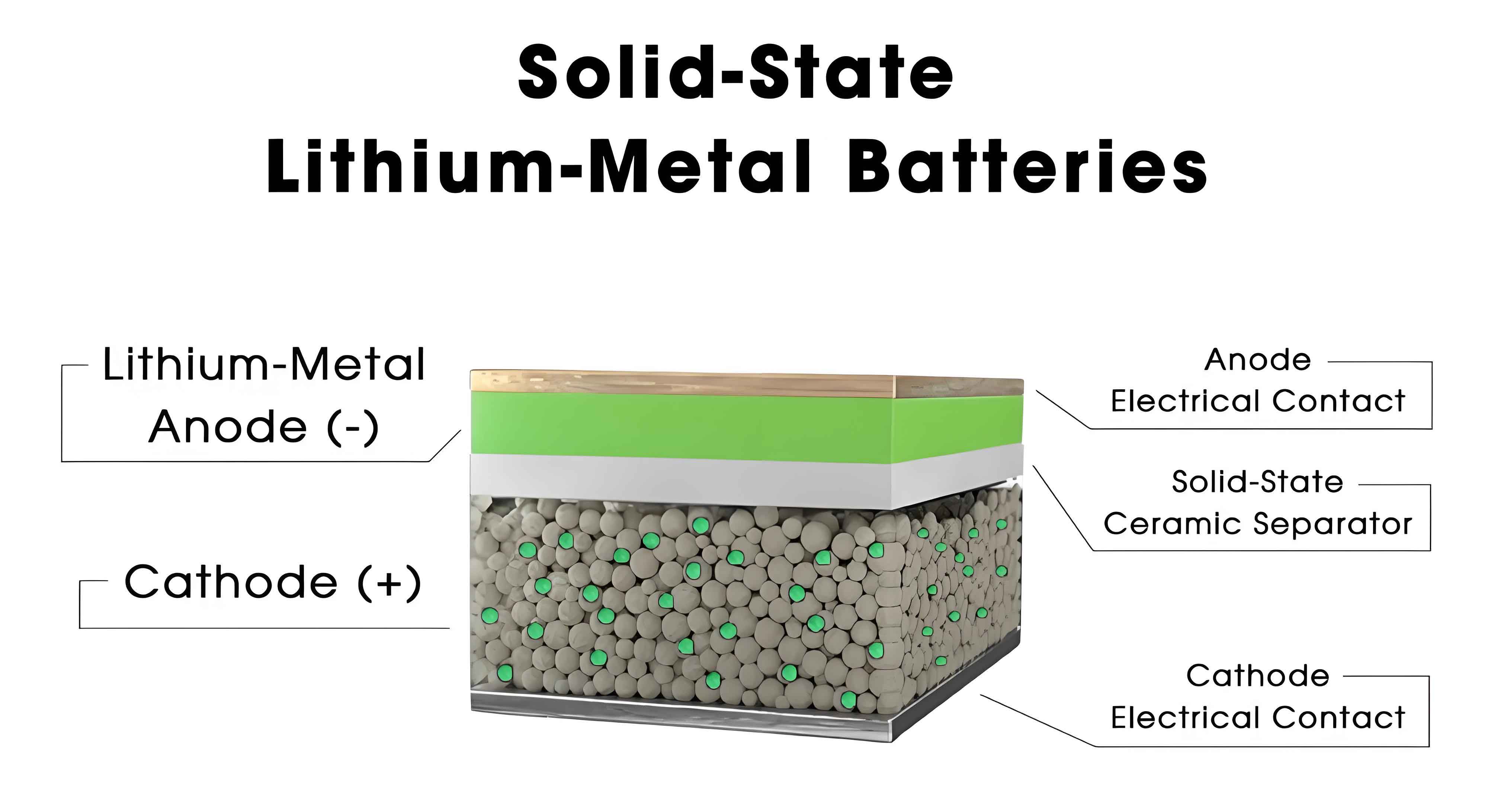
As a researcher deeply immersed in the field of energy storage technologies, I have witnessed the transformative potential of solid-state batteries. These next-generation power sources promise to revolutionize industries ranging from electric vehicles (EVs) to grid storage by addressing the critical limitations of conventional lithium-ion batteries. Below, I synthesize the latest advancements, challenges, and projections for solid-state battery development, leveraging insights from leading experts and industry pioneers.
1. Introduction: The Imperative for Solid-State Batteries
Traditional liquid electrolyte batteries, while dominant today, face intrinsic limitations:
- Safety Risks: Flammable liquid electrolytes pose fire hazards under thermal stress.
- Energy Density Ceiling: Current systems struggle to exceed 300 Wh/kg, restricting EV range.
- Degradation: Electrolyte decomposition and dendrite formation reduce cycle life.
Solid-state batteries replace liquid electrolytes with solid alternatives, offering:
- Enhanced safety (non-flammable components).
- Higher theoretical energy density (up to 500 Wh/kg).
- Improved longevity (reduced side reactions).
2. Technological Progress in Solid-State Batteries
2.1 Material Innovations
Key components of solid-state batteries include:
- Solid Electrolytes: Sulfide-based materials dominate research due to high ionic conductivity (10⁻²–10⁻³ S/cm).
- Cathodes: High-nickel ternary (NMC) cathodes paired with sulfide electrolytes.
- Anodes: Silicon-carbon composites to maximize capacity.
Table 1: Comparative Performance Metrics
| Parameter | Liquid Li-ion | Solid-State (Sulfide) |
|---|---|---|
| Energy Density (Wh/kg) | 250–300 | 350–400 (2027 target) |
| Cycle Life | 800–1,200 | 1,000+ |
| Operating Temperature | -20–60°C | -30–100°C |
2.2 AI-Driven Research Acceleration
Machine learning and AI for Science (AI4S) platforms are accelerating material discovery. For instance, optimizing sulfide electrolyte synthesis can be modeled using:σ=σ0exp(−EakT)σ=σ0exp(−kTEa)
where σσ = ionic conductivity, EaEa = activation energy, kk = Boltzmann constant, and TT = temperature.
Collaborative platforms integrating 30+ enterprises are training domain-specific AI models to predict material properties and streamline prototyping.
3. Technical Challenges
3.1 Electrolyte Limitations
Ideal solid electrolytes must balance:
- High Ionic Conductivity: σ>10−3 S/cmσ>10−3S/cm.
- Chemical Stability: Resistance to oxidation/reduction at electrodes.
- Mechanical Strength: Mitigating crack propagation during cycling.
Table 2: Electrolyte Material Trade-offs
| Material Class | Conductivity (S/cm) | Stability | Scalability |
|---|---|---|---|
| Sulfide | 10⁻²–10⁻³ | Moderate | Challenging |
| Oxide | 10⁻⁴–10⁻⁵ | High | Feasible |
| Polymer | 10⁻⁵–10⁻⁶ | Low | Easy |
3.2 Interface Engineering
Poor electrode-electrolyte contact increases interfacial resistance (RinterfaceRinterface), degrading performance:Rtotal=Rbulk+RinterfaceRtotal=Rbulk+Rinterface
Strategies like nanostructured coatings and pressure-assisted sintering are under investigation.
3.3 Manufacturing Complexity
Current processes (e.g., thin-film deposition) are costly. Scaling production requires innovations in:
- Roll-to-roll manufacturing.
- Low-temperature sintering.
4. Roadmap to Commercialization
4.1 Near-Term Milestones (2027)
- Pilot Production: Small-scale manufacturing for EV prototypes.
- Energy Density: 400 Wh/kg cells validated in lab settings.
- Cost Reduction: Target < $150/kWh via supply chain optimization.
4.2 Mass Production (2030)
- Gigawatt-Hour Factories: Partnerships between automakers (e.g., BYD, FAW) and battery firms.
- Performance Targets:Energy Density≥500 Wh/kg,Cycle Life≥1,500Energy Density≥500Wh/kg,Cycle Life≥1,500
5. Collaborative Efforts and Standardization
Cross-industry alliances, such as China’s Solid-State Battery Innovation Platform, are critical for:
- Shared R&D Infrastructure: Accelerating material testing.
- Unified Standards: Defining metrics for safety, performance, and durability.
6. Conclusion
Solid-state batteries represent a paradigm shift in energy storage. While challenges in materials, interfaces, and manufacturing persist, concerted efforts across academia and industry are paving the way for commercialization. By 2027, we anticipate limited deployment in premium EVs, with mass adoption achievable by 2030. The integration of AI, collaborative platforms, and policy support will be pivotal in maintaining global leadership in this transformative technology.
